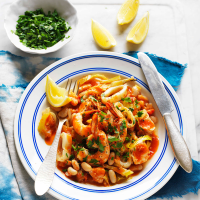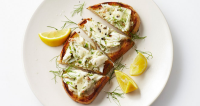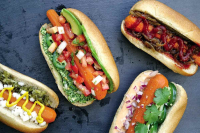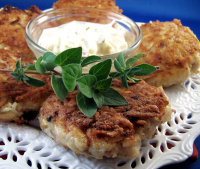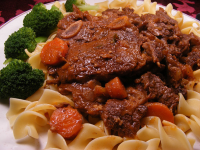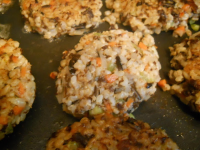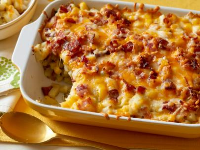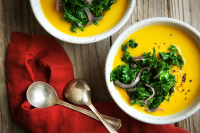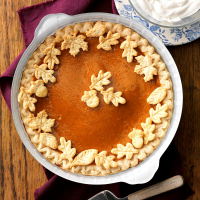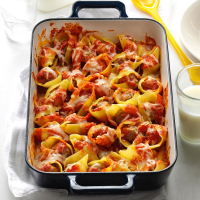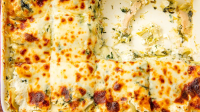HOMEMADE CHEDDAR CHEESE RECIPE | HOW TO MAKE CHEDDA…
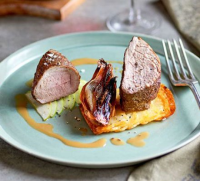
Provided by admin
Prep Time 0 minutes
Cook Time 2 hours
Number Of Ingredients 20
Steps:
- In a large pot, heat the milk to 85°F, stirring frequently.
- As the milk is heating, add the calcium chloride, if using.
- When the milk gets to 85°F, add culture, stir in with an up-and-down motion, cover, and ferment for 1 hour. (Note: It does not have to stay at 85. If it naturally drops in temperature, that is OK.)
- Stir to homogenize the milk, and slowly fold in the diluted rennet. Using an up-and-down motion with your spoon will ensure that the rennet works its way through all the milk, so you can get the highest possible yield.
- Remove from heat source and allow the cheese to set for 1 hour, or until the whey begins to separate from the curd. You should see a layer of mostly clear whey floating on top of the curd, and the curd should be pulling away from the sides of the pot.
- Using the knife, carefully cut the curds into ¼-inch cubes and allow to set for 5 minutes. Do not stir.
- Over the next 30 minutes, slowly heat the curds to 100°F, stirring frequently. As you stir, the curds will shrink.
- Once the curds are at 100°F, maintain the temperature and continue stirring for the next 30 minutes. If the curds get too hot, remove from heat.
- After 30 minutes, stop stirring and allow the curds to settle to the bottom of the pot. This will take about 20 minutes.
- Pour the curds into a colander. Place the colander and curds back into the cheese pot and allow to drain for 15 minutes.
- Remove the colander from the pot and turn the curds out onto a cutting board. You should have a semi-solid mass that looks like jelly. Pour the whey out of the pot, cut the mass into five slices, and place back into the pot. Cover.
- Fill a sink or basin with 102°F water and place the pot and curds into it. Keeping the temperature of the curds right around 100°F, turn the slices every 15 minutes for the next 2 hours. This is the cheddaring process and will give your cheese its unique flavor and deliciousness.
- After 2 hours, the curds will be shiny and very firm. Remove them from the pot and cut into ½-inch cubes. Place back in the pot, cover, and place in the sink filled with 102°F water.
- In 10 minutes, stir gently with your fingers or a wooden spoon. Repeat twice more.
- Remove the pot from the sink and add salt. Stir gently once more.
- Line the cheese press with a piece of cheesecloth and carefully place the curds into the press. Wrap the cloth around the cheese andpress at 10 pounds of pressure for 15 minutes.
- Remove the cheese from the press, unwrap, and flip the cheese. Re-wrap using a fresh piece of cheesecloth, and press at 40 pounds of pressure for 12 hours.
- Remove the cheese from the press, unwrap, and flip the cheese. Re-wrap using a fresh piece of cheesecloth, and press at 50 pounds of pressure for 24 hours.
- Remove the cheese from the press and air-dry for 2 to 3 days, until smooth and dry to the touch.
- Wax the cheese and age at 55° to 60°F for at least 60 days. (Click here for practical methods for aging cheese.)
HOMEMADE CHEDDAR CHEESE RECIPE | HOW TO MAKE CHEDDA…
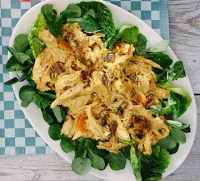
Provided by admin
Prep Time 0 minutes
Cook Time 2 hours
Number Of Ingredients 20
Steps:
- In a large pot, heat the milk to 85°F, stirring frequently.
- As the milk is heating, add the calcium chloride, if using.
- When the milk gets to 85°F, add culture, stir in with an up-and-down motion, cover, and ferment for 1 hour. (Note: It does not have to stay at 85. If it naturally drops in temperature, that is OK.)
- Stir to homogenize the milk, and slowly fold in the diluted rennet. Using an up-and-down motion with your spoon will ensure that the rennet works its way through all the milk, so you can get the highest possible yield.
- Remove from heat source and allow the cheese to set for 1 hour, or until the whey begins to separate from the curd. You should see a layer of mostly clear whey floating on top of the curd, and the curd should be pulling away from the sides of the pot.
- Using the knife, carefully cut the curds into ¼-inch cubes and allow to set for 5 minutes. Do not stir.
- Over the next 30 minutes, slowly heat the curds to 100°F, stirring frequently. As you stir, the curds will shrink.
- Once the curds are at 100°F, maintain the temperature and continue stirring for the next 30 minutes. If the curds get too hot, remove from heat.
- After 30 minutes, stop stirring and allow the curds to settle to the bottom of the pot. This will take about 20 minutes.
- Pour the curds into a colander. Place the colander and curds back into the cheese pot and allow to drain for 15 minutes.
- Remove the colander from the pot and turn the curds out onto a cutting board. You should have a semi-solid mass that looks like jelly. Pour the whey out of the pot, cut the mass into five slices, and place back into the pot. Cover.
- Fill a sink or basin with 102°F water and place the pot and curds into it. Keeping the temperature of the curds right around 100°F, turn the slices every 15 minutes for the next 2 hours. This is the cheddaring process and will give your cheese its unique flavor and deliciousness.
- After 2 hours, the curds will be shiny and very firm. Remove them from the pot and cut into ½-inch cubes. Place back in the pot, cover, and place in the sink filled with 102°F water.
- In 10 minutes, stir gently with your fingers or a wooden spoon. Repeat twice more.
- Remove the pot from the sink and add salt. Stir gently once more.
- Line the cheese press with a piece of cheesecloth and carefully place the curds into the press. Wrap the cloth around the cheese andpress at 10 pounds of pressure for 15 minutes.
- Remove the cheese from the press, unwrap, and flip the cheese. Re-wrap using a fresh piece of cheesecloth, and press at 40 pounds of pressure for 12 hours.
- Remove the cheese from the press, unwrap, and flip the cheese. Re-wrap using a fresh piece of cheesecloth, and press at 50 pounds of pressure for 24 hours.
- Remove the cheese from the press and air-dry for 2 to 3 days, until smooth and dry to the touch.
- Wax the cheese and age at 55° to 60°F for at least 60 days. (Click here for practical methods for aging cheese.)
HOW TO MAKE CHEESE SAUCE | ALLRECIPES
Aug 24, 2020 · Classic cheese sauce begins with béchamel — a simple white sauce made of butter, flour, milk, and a few seasonings. Cheese is then added to the white sauce to create cheese sauce (called a Mornay sauce in French cuisine). Here are the three basic steps to make cheese …
From allrecipes.com
From allrecipes.com
See details
HOMEMADE RICE MILK | MINIMALIST BAKER RECIPES
Feb 25, 2022 · -While straining the rice water, some of what was left was a superfine paste (kinda like cheese), which I added back into the rice milk. It helped to make the rice milk creamier. …
From minimalistbaker.com
From minimalistbaker.com
See details
15 SWISS RECIPES YOU CAN MAKE AT HOME - INSANELY GOOD
Mar 03, 2021 · 1. Cheese Fondue. Create a pot of delicious, melted, and oh-so-gooey cheese with this fondue recipe. This winter delicacy is considered the ultimate comfort food, especially among cheese …
From insanelygoodrecipes.com
From insanelygoodrecipes.com
See details
HOW TO MAKE CHEESE SAUCE | ALLRECIPES
Aug 24, 2020 · Classic cheese sauce begins with béchamel — a simple white sauce made of butter, flour, milk, and a few seasonings. Cheese is then added to the white sauce to create cheese sauce (called a Mornay sauce in French cuisine). Here are the three basic steps to make cheese …
From allrecipes.com
From allrecipes.com
See details
















